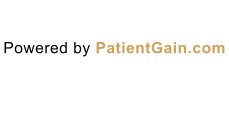Seasonal Affective Disorder Treatment Specialist in Creve Coeur, Independence and Columbia, MO
Seasonal Affective Disorder (SAD) is a type of depression that occurs at certain times of the year, typically during the fall and winter months. It is characterized by symptoms such as low energy, difficulty concentrating, changes in sleep and appetite, and feelings of hopelessness. Seasonal affective disorder treatment is available at Success Health System from board-certified Dr. Moses Tabe Ambilichu M.D. For more information, contact us or request an appointment online today. We have convenient locations to serve you in Creve Coeur MO, Independence MO, and Columbia MO.




Table of Contents:
What is seasonal affective disorder?
How common is seasonal affective disorder?
What are the symptoms of seasonal affective disorder?
Who is at risk for seasonal affective disorder?
Seasonal affective disorder (SAD) is a specific type of depression that emerges in response to seasonal changes, typically beginning in the fall. This form of depression intensifies during the late fall and early winter months and tends to subside as spring brings brighter and sunnier days.
In addition to SAD, there is a milder variant referred to as the “winter blues.” It is common to experience a slight decrease in mood during the colder months, due to factors like limited outdoor activities and early darkness.
However, SAD represents a more severe manifestation of depression. It significantly impacts various aspects of daily life, including emotions, thoughts, and overall well-being.
The effects of SAD extend beyond temporary sadness and have a noticeable impact on one’s ability to function. The good news is that effective treatments are available to help individuals cope with and overcome this challenging period of seasonal depression. SAD is sometimes also known as seasonal depression.
SAD affects approximately 5% of adults in the United States, with a higher prevalence among women. This specific type of depression typically begins during young adulthood, often between the ages of 18 and 30.
Researchers have yet to determine the exact reasons for the gender difference in SAD occurrence. In addition to SAD, a milder form known as the winter blues is experienced by an estimated 10% to 20% of people in America.
SAD is officially recognized as a sub-type of major depressive disorder with seasonal patterns. If an individual experiences SAD, they may exhibit various mood changes and symptoms associated with depression.
These symptoms include a persistent feeling of sadness and depression throughout most of the day, occurring nearly every day. Anxiety may also be present, accompanied by intense carbohydrate cravings and subsequent weight gain.
Individuals with SAD often experience extreme fatigue and a significant lack of energy, making even simple tasks challenging. Feelings of hopelessness or worthlessness may pervade their thoughts, while concentration difficulties become apparent.
Irritability and agitation are common emotional states, and individuals may perceive their limbs (arms and legs) as heavy.
Loss of interest in activities that would usually bring pleasure, along with social withdrawal, can occur in SAD. Sleeping problems are prevalent, with individuals tending to oversleep rather than experience insomnia. Disturbingly, thoughts of death or suicide may arise in severe cases.
In the case of summer SAD, distinct symptoms may manifest. These can include heightened agitation, restlessness, and increased anxiety. Decreased appetite leading to weight loss may be observed, and episodes of violent behavior can occur.
Troublesome sleep patterns, such as insomnia, may also be experienced by individuals with summer SAD.
When it comes to the risk factors for SAD, certain characteristics increase the likelihood of developing this disorder. Younger individuals and women are more commonly affected by SAD compared to other demographic groups.
Furthermore, individuals who have a preexisting mood disorder, such as major depressive disorder or bipolar disorder, are at a higher risk of experiencing SAD. Family history also plays a role, as having relatives with SAD or other forms of depression and mental health conditions, such as major depression or schizophrenia, increases the susceptibility to SAD.
Additionally, residing in regions located far north or south of the equator, where there is reduced sunlight during the winter months, contributes to the risk.
Living in areas characterized by cloudy weather patterns also adds to the likelihood of developing SAD. These various factors interact and contribute to the prevalence of seasonal affective disorder, influencing who is more susceptible to experiencing this particular type of depression.
Seasonal affective disorder (SAD) treatment is available at Success Health System. For more information, contact us or request an appointment online today. We have convenient locations to serve you in Creve Coeur MO, Independence MO, and Columbia MO. We serve patients from Creve Coeur MO, Independence MO, Columbia MO, Overland MO, Bridgeton MO, Blue Springs MO, Kansas City MO, Midway MO, and surrounding areas.

Check Out Our 5 Star Reviews


Additional Services You May Be Interested In
▸Addiction Treatment
▸ADHD Treatment
▸Anxiety Treatment
▸Bipolar Disorder
▸Depressive Disorders
▸Mental Disorder
▸Obsessive Compulsive Disorders
▸Psychotic Disorders
▸PTSD Treatment
▸Phobias and Fears Therapist
▸Psychiatrist
▸Substance Disorder
▸Social Anxiety Psychiatrist
▸Medication Management
▸Psychotherapy
▸Exomind TMS – Columbia
▸Spravato – Independence

Additional Services You May Be Interested In
▸Addiction Treatment
▸ADHD Treatment
▸Anxiety Treatment
▸Bipolar Disorder
▸Depressive Disorders
▸Mental Disorder
▸Obsessive Compulsive Disorders
▸Psychotic Disorders
▸PTSD Treatment
▸Phobias and Fears Therapist
▸Psychiatrist
▸Substance Disorder
▸Social Anxiety Psychiatrist
▸Medication Management
▸Psychotherapy
▸Exomind TMS – Columbia
▸Spravato – Independence





